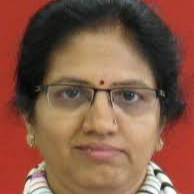
Nandini Sidnal
Work place: Department of CSE, KLE CET, Belagavi, India
E-mail: sidnal.nandini@gmail.com
Website:
Research Interests: Autonomic Computing, Distributed Computing, Computing Platform, Mathematics of Computing, E-learning
Biography
Dr. Nandini Sidnal, Professor and Research Supervisor in VTU, Belagavi, Karnataka, India. Her main research interests include distributed computing, E-commerce, E-learning, wireless networks, agent technology, parallel computing and cloud computing. She is a member of the Indian Society for Technical Education (ISTE), associate member of Agent Link, member of IEEE and member of ACM.
Author Articles
Query Auto-Completion Using Relational Graph Convolutional Network in Heterogeneous Graphs
By Vidya Dandagi Nandini Sidnal Jayashree Kulkarni
DOI: https://doi.org/10.5815/ijeme.2025.02.02, Pub. Date: 8 Apr. 2025
Search engine acts as an interface between users and computers. Online search is a very quick and impactful evolution of human experience. It is becoming a key technology that people rely on every day to get information about almost everything. Searching is typically performed with a common purpose underlying the query. If the user does not know the knowledge of the keywords to be searched, spends more time to frame the query. The search may not contain the user’s intended answers. Understanding the meaning of the query given by the user is the important role of the search engine. The query auto-completion feature is important for search engines. The query auto-completion process occurs uninterruptedly, dynamically listing terms with each click. It provides recommendations that facilitate query formulation and improve the relevancy of the search. Graphs and additional data structures are used frequently in computer science and related fields. The applications of graph machine learning include data recovery, friendship recommendation, and social networking. Heterogeneous graphs (HGs) consist of different kinds of nodes and links, and are useful for defining a wide range of complicated real-world systems a robust graph neural architecture for encoding a knowledge graph is the Relational Graph Convolutional Network (R-GCN).The proposed model uses the supervised Relational Graph Convolutional Network(R-GCN), Long Short-Term Memory (LSTM) for completion of the query. The model predicts the object given the subject and predicate and the accuracy is 92.4%.
[...] Read more.Distributed Wormhole Attack Mitigation Technique in WSNs
By Sharada Kori Krishnamurthy G N Nandini Sidnal
DOI: https://doi.org/10.5815/ijcnis.2019.05.03, Pub. Date: 8 May 2019
Sensing element Networks area unit gaining a lot of attention as a result of applications like sensible cities(traffic congestion, sensible parking, sensible lighting), sensible setting (forest hearth detection, air pollution) security and emergencies (Radiation levels, Explosive and dangerous Gases, Military applications) to call a couple of. The important facet of those observation and chase applications area unit security and sensing element location. The Wireless sensing element Networks may be thought to be associate degree freelance theme for accomplishing data-intensive chores like atmosphere (habitat) perceptive, data congregation, earthquake perceptive, parcel intelligence operation, etc. and any communication to the appliance. Wormhole attack could be a severe threat to the safety of the network. Because it could be a passive attack, it's terribly difficult to notice Wormhole attack. The most stress of this analysis work is to mitigate the wormhole attack. During this paper, we have a tendency to address the wormhole attack by proposing a trust-based wormhole attack mitigation technique. Our projected system is easy with no further hardware demand and no tight clock synchronization.
[...] Read more.Other Articles
Subscribe to receive issue release notifications and newsletters from MECS Press journals